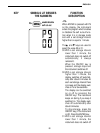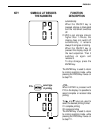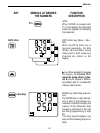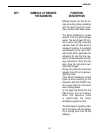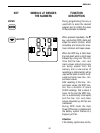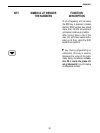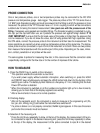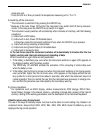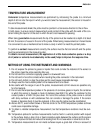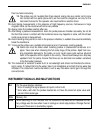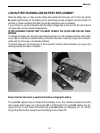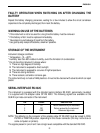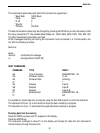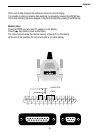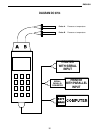
TEMPERATURE MEASUREMENT
Immersion temperature measurements are performed by introducing the probe to a minimum
depth of 60 mm into the liquid in which you want to take the measurement; the sensor is housed in
the end of the probe.
To take measurements in air, the probe must be pointed in a transverse direction to the air flow.
In both cases, to ensure correct measurement avoid contact of the probe with the walls of the con-
tainer holding the liquid or of the duct in which the air to be measured is passing.
When taking penetration measurements the tip of the probe must be inserted at a depth of at least
60 mm; the sensor is housed in the end of the probe. When taking measurements on frozen blocks
it is convenient to use a mechanical tool to make a cavity in which to insert the pointed probe.
To perform a contact measurement correctly the surface must be flat and smooth and the probe
must be perpendicular to the measuring plain.
To obtain a correct measurement, the application of a little heat-conductive paste or a drop
of oil (water or solvents must absolutely not be used) helps to improve the response time.
METHOD OF USING THE INSTRUMENT AND WARNINGS
1. Do not expose the probes to gases or liquids that could corrode the material of the sensor or
the probe; clean the probe carefully after use.
2. Do not bend the connectors applying upward or downward force.
3. Do not bend or force the contacts when inserting the probe connector in the instrument.
4. Do not bend, deform or drop the probes as this could cause irreparable damage.
5. Always use the most suitable probe for the measurement to be taken.
6. Be careful with the range of use of the probe, measurements at limit values are possible only
for short periods.
7. Do not use the temperature probes in the presence of corrosive gases or liquids; the container
in which the sensor is housed is made of stainless steel AISI 316, while the container for the
contact probe is of AISI 316 plus silver. Do not let the surfaces of the probe come in contact
with sticky surfaces or with substances that can corrode or damage the probe. If the sensor
breaks or becomes faulty it must be replaced. In this case the probe must be recalibrated.
8. Above 400°C, avoid violent blows or thermal shock to the Pt100 temperature probes as these
could cause irreparable damage.
9. To obtain a reliable temperature measurement, too fast temperature variations must be avoi-
ded.
10. Temperature probes for surface measurements must be held in a vertical position with respect
to the surface. Apply a drop of oil or heat-conductive paste between the surface and the sensor
so as to improve contact and reduce the reading time. Do not use water or solvents to do this.
11. Temperature measurements on non-metal surfaces require a great deal of time on account of
ENGLISH
88



